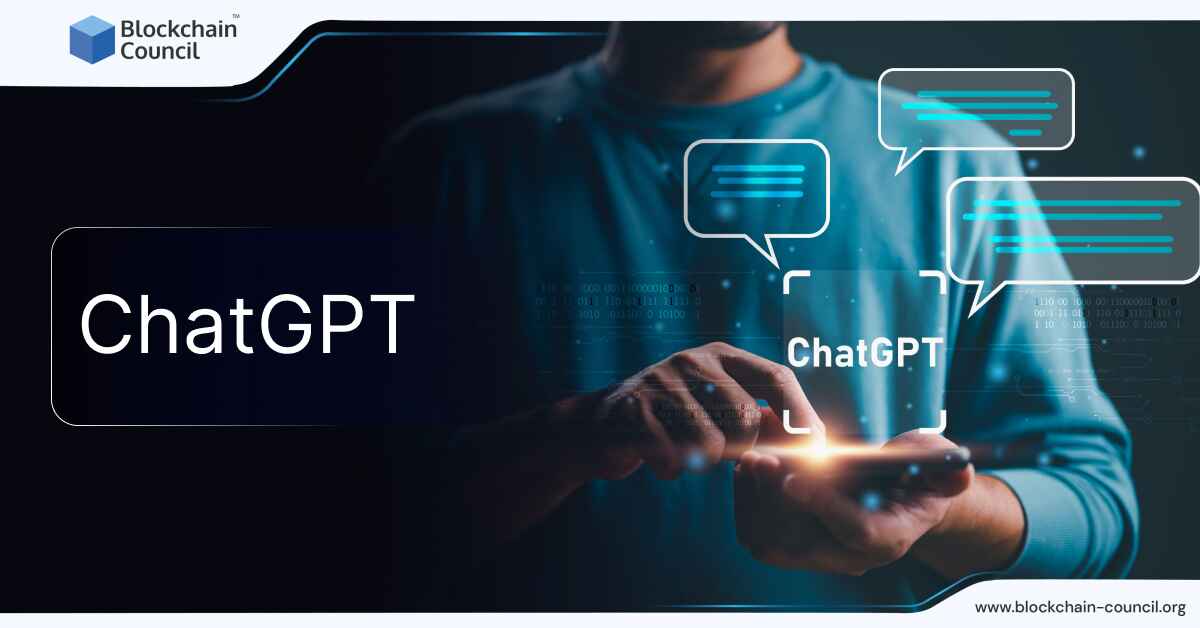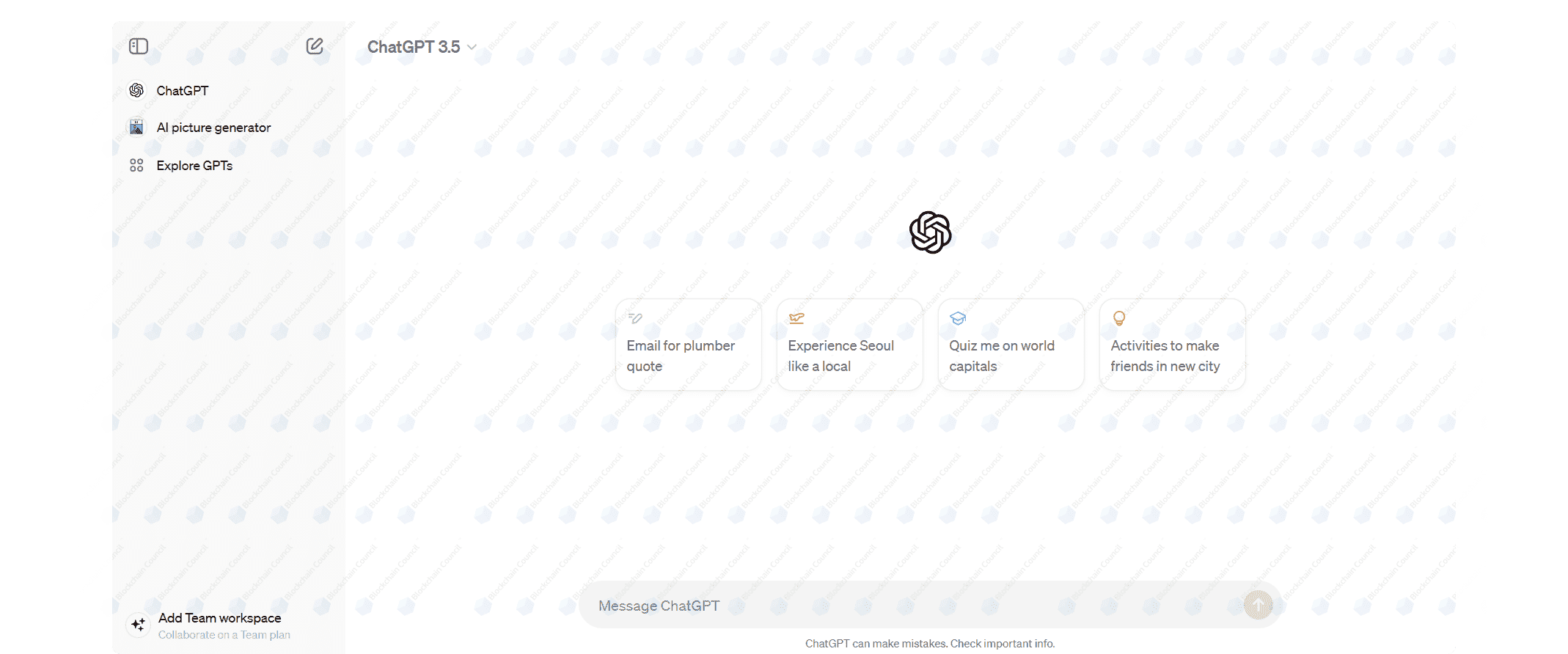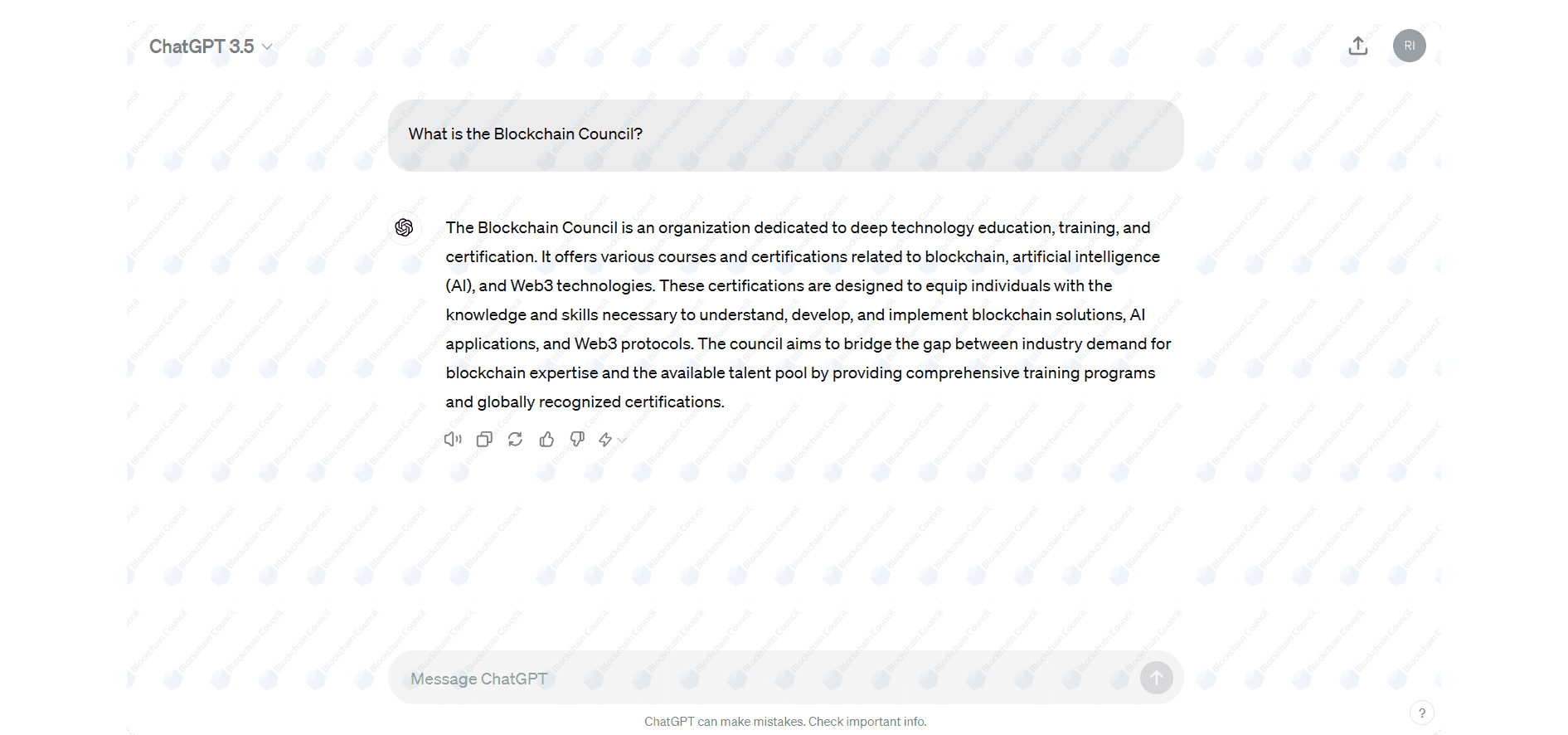
- Blockchain Council
- September 02, 2024
What is ChatGPT?
At its core, ChatGPT is an AI-powered conversational agent trained on vast amounts of text data from the internet. Leveraging the power of deep learning and neural networks, ChatGPT is capable of understanding and generating human-like responses to a wide range of prompts and queries.
Unlike rule-based chatbots, which rely on predefined scripts and responses, ChatGPT generates responses dynamically based on the context and input provided by the user. It comes in 4 models namely ChatGPT-3.5, ChatGPT-4, ChatGPT-4 Turbo and ChatGPT-4o.
If you want to master ChatGPT, then consider the Certified ChatGPT Expert certification by the Blockchain Council.
Key Features of ChatGPT
- Natural Language Understanding: ChatGPT demonstrates remarkable proficiency in understanding and processing natural language input from users. It can comprehend complex sentences, infer context, and generate coherent responses that mimic human conversation.
- Contextual Awareness: ChatGPT exhibits a high level of contextual awareness, allowing it to maintain coherent and relevant conversations over multiple turns. It can remember previous interactions and incorporate context from previous messages into its responses.
- Creativity and Versatility: ChatGPT is not limited to specific domains or topics and can generate responses on a wide range of subjects. It demonstrates creativity in its responses and can provide informative, entertaining, or even humorous interactions depending on the context.
- Continuous Learning: ChatGPT is continuously learning and evolving based on the data it encounters and the feedback it receives from users. This enables it to adapt to new topics, languages, and conversational styles over time.
How to Use ChatGPT?
Step 1: Create an Account
Visit chatgpt.com and sign up using your email, Google, or Microsoft account. You’ll need to verify your email and phone number as part of the registration process.
Step 2: Log In and Set Up
After creating your account, log in. Familiarize yourself with the interface. The input box at the bottom is where you type your questions or prompts, and the responses will appear just above it. You can access settings to manage chat history and preferences like dark mode.
Step 3: Start a New Chat
Click the “New Chat” button to begin a session. Type your question or prompt in the input box and press Enter to submit. Clear and specific queries yield the best results.
Step 4: Review and Refine Responses
ChatGPT will generate a response based on your input. Review the answer to see if it meets your needs. If not, refine your question or ask follow-up questions for more precise information. Use the regenerate button if you want a different response.
Step 5: Use Advanced Features
While there is a free tier, OpenAI offers subscription plans that provide access to advanced features and more usage. For more detailed tasks, provide context, goals, and desired formats in your prompts.
If you’re using ChatGPT Plus and ChatGPT-4o you can access advanced features like internet browsing for up-to-date information and plugins for specific tasks like booking flights or analyzing documents.
Wondering how to use ChatGPT-4o? Read more here.
Step 6: Iterate and Experiment
If the initial response isn’t satisfactory, rephrase your question or provide additional context. Experiment with different approaches to find the most effective way to communicate your needs to ChatGPT. Specify if you want responses in a certain tone or style.
 Applications of ChatGPT
Applications of ChatGPT
- Customer Support and Service: ChatGPT can be deployed as a virtual assistant or chatbot to provide customer support and assistance across various industries. It can handle routine inquiries, troubleshoot common issues, and escalate complex queries to human agents when necessary, thereby enhancing efficiency and customer satisfaction.
- Content Generation: ChatGPT can assist content creators, journalists, and writers in generating articles, blog posts, product descriptions, and other forms of written content. It can provide inspiration, generate ideas, and even help with drafting and editing content, saving time and effort for human authors.
- Education and Training: ChatGPT can be utilized in educational settings to provide personalized tutoring, answer students’ questions, and facilitate interactive learning experiences. It can also serve as a language learning tool, providing practice exercises, vocabulary drills, and conversation practice in various languages.
- Mental Health Support: ChatGPT has the potential to offer mental health support and counseling services by engaging in empathetic conversations with users and providing resources and guidance for managing stress, anxiety, and other mental health concerns. While it is not a substitute for professional therapy, ChatGPT can serve as a supplemental resource for those in need of support.
Impact and Future Outlook
The advent of ChatGPT has had a profound impact on various industries and domains, revolutionizing the way we interact with AI systems and leveraging the power of natural language processing to enhance productivity, efficiency, and accessibility. As ChatGPT continues to evolve and improve, we can expect to see its integration into a wide range of applications and platforms, further democratizing access to AI-driven conversational agents and expanding the possibilities for human-machine interaction.
Challenges and Ethical Considerations
While ChatGPT offers tremendous potential, it also raises important ethical considerations and challenges that must be addressed. These include concerns about bias and fairness in AI-generated content, privacy and data security implications, and the potential for misuse and abuse of AI-powered conversational agents. It is essential for developers, researchers, and policymakers to work collaboratively to ensure that AI technologies like ChatGPT are developed and deployed responsibly, with a focus on transparency, accountability, and ethical use.
Conclusion
In conclusion, ChatGPT represents a significant milestone in the field of natural language processing, showcasing the transformative potential of AI-driven conversational agents. With its ability to understand, generate, and engage in human-like conversations, ChatGPT has the power to revolutionize how we interact with AI systems across various industries and domains. While challenges and ethical considerations remain, the future outlook for ChatGPT is undeniably promising, paving the way for a new era of intelligent, empathetic, and versatile AI companions.







































































 Applications of ChatGPT
Applications of ChatGPT



 Guides
Guides News
News Blockchain
Blockchain Cryptocurrency
& Digital Assets
Cryptocurrency
& Digital Assets Web3
Web3 Metaverse & NFTs
Metaverse & NFTs
